
Lady Penhryn
..http://www.nla.gov.au/exhibitions/georgeraper/timeline/chronology-print.html voyages of the Sirius and George Raper, painter. *http://www.3pintsgone.com/ThereIsAShip/SailorsLife.htm
 Leaving Portsmouth.
Leaving Portsmouth.http://members.optushome.com.au/guthrigg/conships2.htm Ships of the First Fleet.Paintings. ..http://www.forcez-survivors.org.uk/historical/pow.html other ships named the Prince of Wales.
| Category | Embarked | Born on Voyage | Died or left Voyage | Landed at Sydney Cove |
| Officials & Passengers | 15 | 1 | 14 | |
| Marines | 247 | 2 | 245 | |
| Marines' Wives | 32 | 1 | 31 | |
| Marines' Children | 14 | 14 | ||
| Marines' Children - Born | 10 | 1 | 9 | |
| Ship's crew | 323 | 17 | 306 | |
| Convicts | 775 | 43 | 732 | |
| Convicts' Children - Embarked | 14 | 3 | 11 | |
| Convicts' Children - Born | 12 | 1 | 11 | |
| Totals | 1420 | 22 | 69 | 1373 |
"I saw the land very clearly, but it was a case of so near and yet so far, as the winds blowing against us could no more approach Botany Bay and pass through the heads to anchor than a man can climb a greasy pole."
Captain Phillip - HMS SUPPLY January 13 1788 ********************************************************************************** "Today the long awaited day eventually came as Supply hauled into Botany Bay. At three, Lt. Dawes, King and myself and some officers on the Supply landed on the north side . . . We observed some natives. I think it is easy to conceive the ridiculous figure we must appear to these poor creatures, who are perfectly naked." Captain Phillip - 18 January 1788
Floating Brothel. http://members.tripod.com/arlindo_correia/060502.html
The Ships of the First Fleet.....On Sunday 13th May, 1787 eleven small ships carrying about 1,500 people set sail from Portsmouth, England on an epic voyage of over 13,000 miles (20,900 k kilometres) and founded t
First Fleet resources on the Internet" http://www.pcug.org.au/~pdownes/dps/1stflt.htm - First Fleet 1788 http://yarra.vicnet.net.au/~firstff/list.htm - The Provisions Carried by the First Fleet http://home.vicnet.net.au/~firstff/welcome.htm First Fleet Fellowship - Ships and Voyage, Pictures and history of the ships of the First Fleet, and how to become a member if your ancestors arrived on the First Fleet. Genealogical Societies with special First Fleet interests. Fellowship of First Fleeters. 105 Cathedral St.,Woolloomooloo, Sydney, NSW 2011 Australia Phone: (02) 9360 3788. The 1788-1820 Pioneer Association P.O. Box 57, Croydon, NSW 2132 Australia Phone (02) 9797 8107 Descendants of Convicts Group. P.O. Box 12224, A'Beckett St., Melbourne, VIC 3000, Australia First Fleet Fellowship Vic Inc. http://home.vicnet.net.au/~firstff/
First Fleet FellowshipC/- Polly Woodside Maritime ParkLorimer Street East Southbank Victoria 3000 Australia Ph: (03) 9370 9590
The nation of "Australia." *
Deptford survey in October 1786 recorded her measurements of 7'3" between decks afore, 6'11" midships and abaft. Carried: Crew ± 30 + 20 others + 195 male convicts. (245) (ref *) Lt. P. G King's Journal states there was 30 Seamen, 35 Marines and 194 Convicts (259) 14? Skippered by: Master Duncan Sinclair - Owner: William Walton & Co. Built as a 3 master-square rig, 1 quarter deck ± 114 x 31ft and 2 decks without galleries or figurehead, and was registered at Hull in 1783. The largest ship of the fleet, and little is known after her return to England and disappeared from records in 1808. Borrowdale Store Ship - 272 Tons (a) 275 (k), ref 1 75-ft. (22.7m.) long and 22-ft. (6.7m.) beam. Deptford survey in 1785 recorded her 272k. Height between decks after 5'8", midships 5'9", abaft 6'9" Carried: 20 crew + 4 others. (24) (ref *) Lt. P. G King's Journal states 22 men. Skippered by: Master Readthorn Hobson Reed. Built at Sunderland in 1785. Very little is known of this ship's history and she disappeared from records after returning to England. Charlotte Convict Transport - 346 Tons (a) 335 (k), 105-ft. (32m.) long and 28-ft. (8.5m.) beam. When surveyed at Deptford Yard on 3 November 1786 measured 6'6' afore, amid and abaft and weighed 345 tons. Carried: Crew ± 30 + 45 others + 88 male and 20 female convicts. (183) (ref *) Lt. P. G King's Journal states 30 Seamen, 42 Marines, 86 Male and 20 Female Convicts. (178) Skippered by: Master Thomas Gilbert (qv) Built in 1784, A three masted fully square rigged with neither galleries or figurehead, whereabouts not known After her return to England she was sold to a Quebec merchant in 1818 and was lost off the coast of Newfoundlands in Nov. 1818
Fishburn Store Ship - 378 Tons (a) (k), 103 ft. (31.4m) long, 29 ft. (8.8m) beam, According to her 1786 Deptford survey, was 6'1' between decks afore, 5'9' midships and 7'1' abaft Carried 28 people. (ref *) Lt. P. G King's Journal states 22 Men Skippered by: Master Robert Brown, Owner: Leighton Co. Built at Whitby in 1780. Like the other store ships, after her epic voyage, she returned to England and disappeared from records. Friendship Convict Transport - 278 Tons (a) 274 (k) 75 ft. (22.9m.) long, 23 ft. (7.0m.) beam, carried 73 people + 76 male and 21 female convicts. (170) (ref *) Lt. P. G King's Journal states 25 Seamen, 40 Marines, 76 and 21 Female Convicts (162)
Skippered by: Master Francis Walton, Little is known about where and when the Scarborough was built c. 1784 During her return voyage to England her crew came down with scurvy Ref. 3 and with insufficient crew to man her she was scuttled and sunk in the Straits of Macassar 28 Oct 1788 Golden Grove Store Ship - 331 Tons (a) 375 (k), 103-ft. (31.4m.) long, 29-ft. (8.8m.) beam, carried 27 people. (ref *)
Lt. P. G King's Journal states 22 Men Skippered by: Master Sharp, Owner: Leighton Co. Built at Whitby in 1780 The Golden Grove had the distinction of carrying the Reverend and his wife to the Colony. Returned to England to work the London - Jamaica run and disappeared from records after 1804.
Lady Penrhyn Convict Transport - 338 Tons (a) 333 (k), 103 ft. (31.4m.) long and 27 ft. (8.23m.) beam, carried 82 people + 101 female convicts. (183) (ref *) Lt. P. G King's Journal states 30 Seamen, 3 Officers of Ms and 101 Female Convicts (134) Skippered by: Master William Sever built at the Thames in 1786. Returned to England and put on the London - Jamaica run and was captured in 1811 in the west Indies. .Prince of Wales Convict Transport - 334 (a) Tons 350 (k), 103 ft. (31.4m.) long, 29 ft. (8.8m.) beam and carried 90 people + 49 female and 1 male convicts. (140) (ref *) Lt. P. G King's Journal states [*] Seamen 29 Mars, 2 Male 47 Female Convicts (78)
Skippered by: Master John Mason built at the Thames in 1786. After her return to England she operated there until 1797 when her registration was transferred to Fort Royal, Martinique after which little is known
Scarborough Convict Transport - 418 Tons (a) 430 (k), 111 ft. (33.8m.) long, 30 ft. (9.1m.) beam and carried 54 people + 208 male convicts (262) Lt. P. G King's Journal states 30 Seaman, 44 Marines and 205 Male Convicts (279) (ref *) Skippered by: Master John Marshall - Owners: Thomas George & John Hopper Built at Scarborough in 1782. The "Scarborough" sailed back to England and returned to Port Jackson in the Second Fleet in June 1800. She was the only ship of the First Fleet to return to Australia apart from the "Sirius" and the "Supply" which sailed to Cape Town and back. The "Scarborough" was eventually broken up in 1798 H.M.S. Supply (armed render) - Brig - 170 Tons (k), 70 ft. (21.3m.) long and 26 ft. (7.92m) beam, 8 Guns and carried 50 people. (ref *) Lt. P. G King's Journal states 50 Men Skippered by: Henry Lidgbird Ball Little is known about this brig's early history. It appears she was built in America about 1759 and was commissioned by the Admiralty in October 1786. The smallest ship of the fleet, but the fastest, she led the fleet during most of the arduous voyage. Arrived at Botany Bay on the 18th January 1788 after a journey of 182 days. The "Supply" remained as one of colony's ships and was eventually broken up in Port Jackson in 1807. H.M.S. Sirius : (Armed Flag Ship) - 540 Tons (k), 110 ft. (33.5m.), 32 ft. (9.8m.) beam, 20 guns, and carried 180 people. (ref *1) Built with 3 Masts- Mainmast 77'7", Foremast 70'7", Mizenmast 66'8" having 8 main Yards sizes ranging from 56'3" to 26'3", Bowsprit (front pointing boom) 47'10", Flying Jib Boom (rear boom) 35'10" NOTE: Any picture with any more or less than 8 mail sails with cross Yards, is not a true account in picture of the Sirius. Refs *4 Armament: Sixteen 6-pounder carriage guns, six 18-pounder carronades and eight swivel guns. 200 short land muskets and 12 sergeants carbines. Ship's Company: 3 Captains, 3 Lieutenants, 1 Master, 1 Boatswain, 1 Carpenter, 1 gunner, 1 Surgeon, 3 Master's Mates, 9 Midshipmen, 2 Surgeon's Mates, 1 Captain's clerk, 1 Master at Arms, 1 Corporal, 1 Armourer, 3 do Mates, 1 Sail Maker, 1 Perser, 1 do Steward, 3 Boatswain's Mates. 3 do Carpenters, 2 do Gunners, 6 Carpenter's crew, 1 Cook, 1 Coxswain, 6 Quarter Masters, 4 Quarter Gunners, 79 Seaman, 22 Marines, 1 Subaltern, 1 Sergeant, 1 Corporal, 1 Drummer, Total 160, but at a muster at sea in August 1787 a total of 136 men could be found on board. Skippered by: Captain John Hunter. Built in 1780 as the "Berwick" for the East India trade. She was badly burnt in a fire and was bought and rebuilt by the Navy in 1786 and renamed "Sirius". Sirius's hull was well built of teakwood and her bottom was covered in copper. She was painted bright yellow with a broad black band near the waterline. After her arrival in Port Jackson she remained as a supply ship and sailed to the Cape of Good Hope in October 1788 to obtain food supplies for the starving colony. After returning, she was eventually wrecked off Norfolk Island during a gale on the 14th April 1790.
26 Jan 1788 Botany Bay LA BOUSSOLE (Compass) - Master: Jean François de la PerouseL'ASTROLABE - Master: Captain de Clonard.
Footnotes:Many books, charts and pictures have shown the Borrowdale as 372 tons when fact she was only 272 tons (a). As such, many pictures have shown her as 3 Masted, when in fact she was about the same length as the Friendship. - H.M.S. Supply, Friendship have been drawn with 2 main masts.
ref *1 Shipping Arrivals & Departures Sydney, 1788-1825 by J.S.Cumpston, Published 1977, Canberra, National Library of Australia. From: "An account of English Colony in New South Wales" By Lt. Colonel David Collins Vol I The number of Convicts given, are usually the numbers landed in Sydney. 2 One of Australia's Great Artist - Mr Frank Allen was a self-taught artist, who was brought up on an island off the Queensland coast and spent most of his younger years at sea where he developed a fascination for old sailing ships. Whilst later working life has been spent as a commercial artist, his spare time has been devoted to the study of Maritime history. The project of painting the ships of the First Fleet involved many long hours of research and hundreds of sketches, before pencil was transformed to watercolour. No plans or draughts, apart from H.M.S. (His/Her Majesty Ship) Sirius and Supply, these having been bought by the Navy - records have survived over 200 years and still exists. The other 9 merchant ships had no central body to keep details at that time. Throughout 2 years of study history books and sketching details. It was possible to build a fairly accurate picture of shipbuilding of that period. In some instances, as in the case of the "Borrowdale" it was not possible to determine, even though this research, as to whether it had a figurehead, scroll-head or neither. As a consequence, it was painted in stern view, so as not be historically misleading. With this information at hand it was possible to depict accurately the people on board in correct perspective to the ship's size and makes one realise how unbelievably courageous the forefathers of Australia were.
 Convicts, Children, Marines & Crews
Convicts, Children, Marines & Crews  We mermaids are tired of being sex symbols. Overfishing is endangering our sisterhood and water babies. http://www.nla.gov.au/exhibitions/georgeraper/maps/maps.htm Maps of First Fleet ***
We mermaids are tired of being sex symbols. Overfishing is endangering our sisterhood and water babies. http://www.nla.gov.au/exhibitions/georgeraper/maps/maps.htm Maps of First Fleet *** The Impress Service covered every port in Great Britain.
Each major port had a captain in charge, while smaller
ports had a lieutenant. These officers were rarely
seagoing men, and often this was the only alternative
to being on half pay. The senior officer was known as
the Regulating Officer, and the headquarters chosen
was called the Rendezvous. Having set up the
Rendezvous, the Regulating officer would then hire
some of the local hard men as 'gangers', to form the
Press Gang (on land the press gang was rarely
formed by sailors).
| Being one of the gangers was perhaps the only sure fire way of not being pressed. The Gang was then sent out and roamed the surrounding countryside in search of suitable recruits.The gang were paid money for travel, 3d per mile for officers 1d for men, and money per man pressed, anything up to 10 shillings. The scope for corruption was large, many men would bribe their way out of the gangs clutches, for a prosperous man a £10 bribe to the press gang was a small price to pay for his continued liberty. |
Napoleonic wars, it had been in existence in one
form or another for centuries, and slowly certain
rules had evolved about thetaking of men for service
at sea. Merchant ships provided obvious targets for
the press gang and captains would board
merchant ships to take off any men he might want,
officers and apprentices were exempt. Many merchant
captains built hideaways for one or two particularly
valuable men to hide in if the press gang came aboard.
The rule was that the captain had to leave enough men
on board to 'navigate the ship', again a phrase open to wide interpretation.
*Although the system of impressment seems harsh and arbitrary to us now, at the time it was accepted if not popular. The civil authorities on shore would often do everything in their power to disrupt the operations of the Press Gang. Many men were pressed into service, and reading their descriptions we can see that once caught they usually accepted their fate with equanimity, at least until they had a chance to escape. The Navy knew that the chances of a man running were highest at the start of his service, desertion rates progressively dropped off up to 18 months in service. After 18 months the desertion rate was very low. If a man deserted his ship an R was put against his name for Run. Avoidance of the Press Gang was a practiced art form and they were unlikely to pick up many men by storming around a town flaming brands in hand. Running battles were frequently fought between the Press Gang and locals, often trying to retrieve a man captured An example of a press warrant, issued to a ships captain in 1809 by the Gang.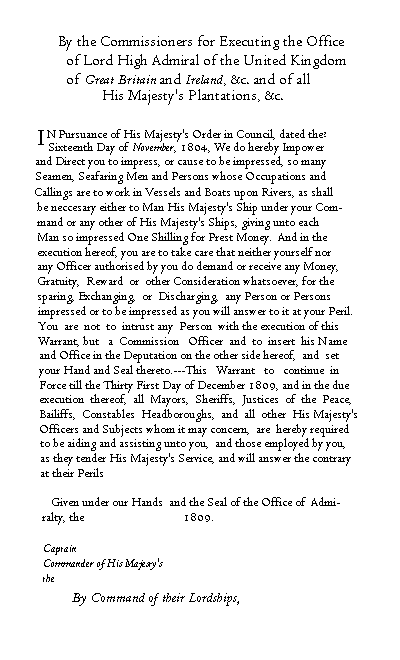 | |


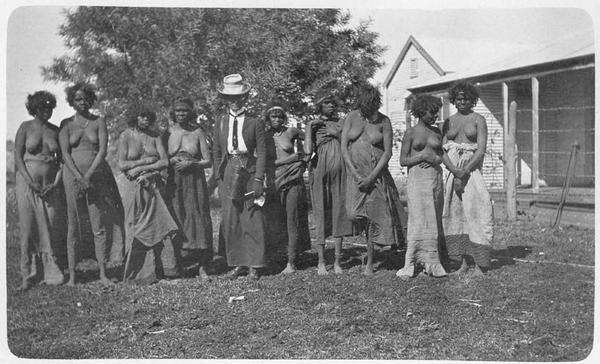






+copy.jpg)










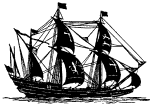





















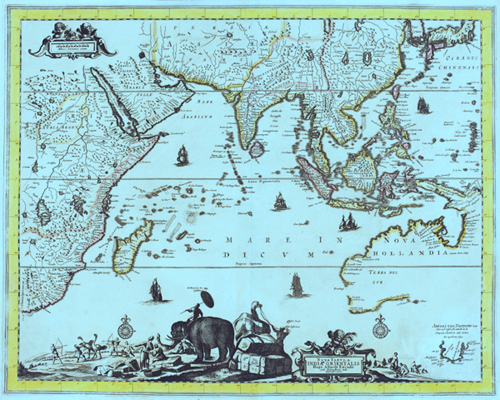

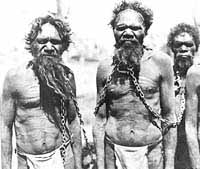
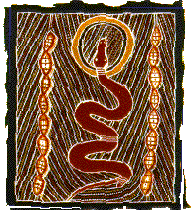


















.jpg)


























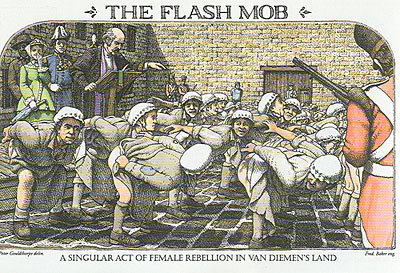
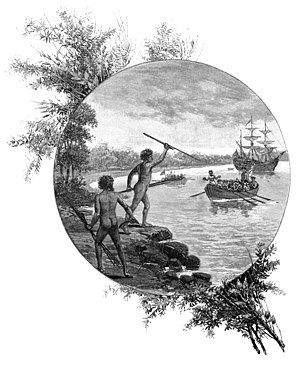 G
G







.jpg)
















No comments:
Post a Comment